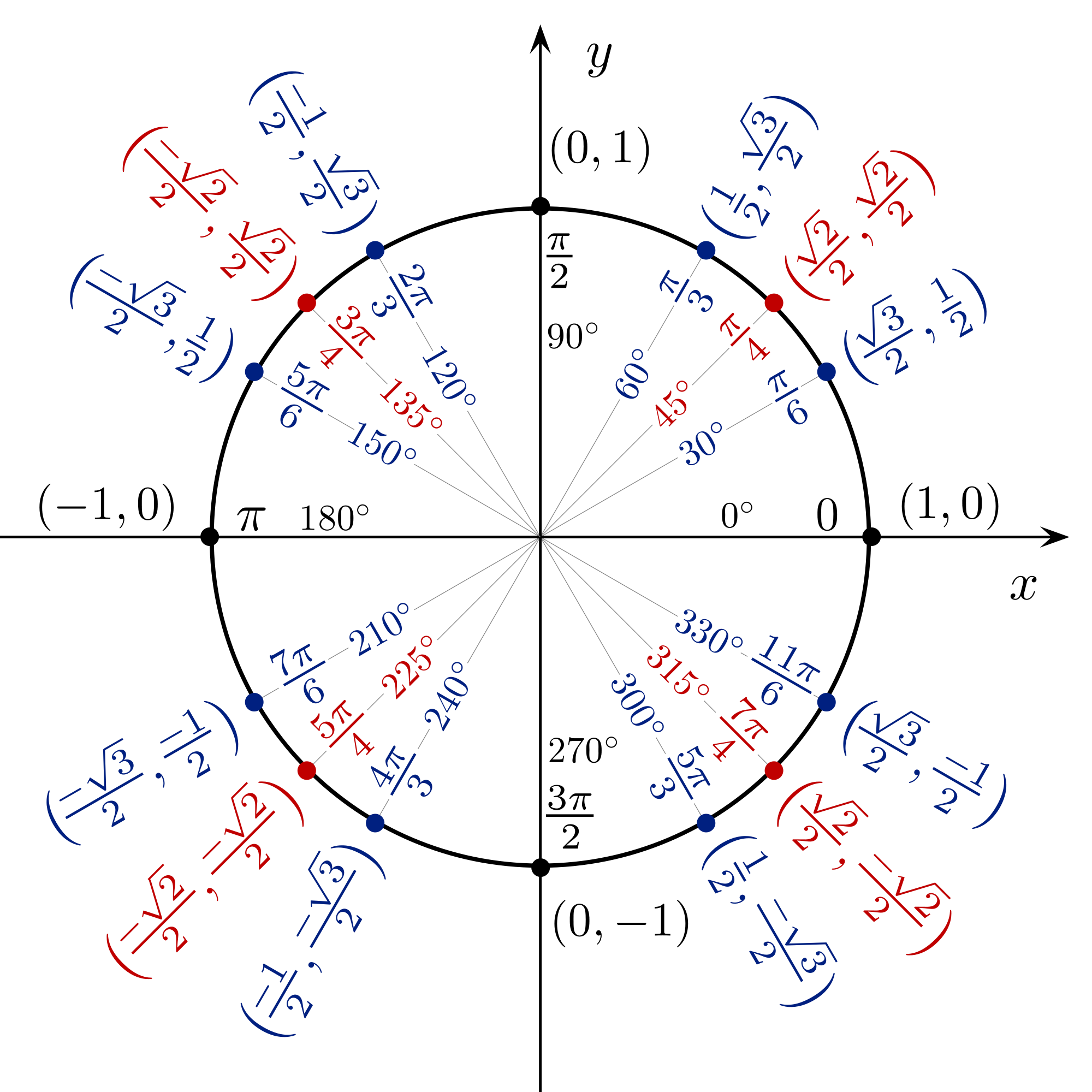Section 2.4 Trig Functions
Let's review the unit circle:

A point on the circle has coordinates \((x,y) = (\cos(\theta), \sin(\theta))\text{.}\) \(\displaystyle \left( \dfrac{\sqrt{4}}{2}, \dfrac{\sqrt{0}}{2} \right) = 2 \pi \text{ or } 0 \) \(\displaystyle \left( \dfrac{\sqrt{3}}{2}, \dfrac{\sqrt{1}}{2} \right) = \dfrac{\pi}{6} \) \(\displaystyle \left( \dfrac{\sqrt{2}}{2}, \dfrac{\sqrt{2}}{2} \right) = \dfrac{\pi}{4} \) \(\displaystyle \left( \dfrac{\sqrt{1}}{2}, \dfrac{\sqrt{3}}{2} \right) = \dfrac{\pi}{3} \) \(\displaystyle \left( \dfrac{\sqrt{0}}{2}, \dfrac{\sqrt{4}}{2} \right) = \pi \)
To calculate derivatives, all we know is the limit definition. Let's calculate the derivative of \(\cos(x)\text{:}\)
Similarly, \(\dfrac{d}{dx}(\sin(x)) = \cos(x)\)
Let's try finding the derivative of \(\tan(x)\) using the quotient rule:
Similarly, \(\dfrac{d}{dx}(\cot(x)) = - \csc^2(x)\)
So far: Derivatives of the "co-" funtions are all negative in sign.
\(\dfrac{d}{dx}(\sin(x)) = \cos(x)\) \(\dfrac{d}{dx}(\cos(x)) = -\sin(x)\) \(\dfrac{d}{dx}(\tan(x)) = \sec^2(x)\) \(\dfrac{d}{dx}(\cot(x)) = -\csc^2(x)\) \(\dfrac{d}{dx}(\sec(x)) = \sec(x) \cdot \tan(x)\) \(\dfrac{d}{dx}(\csc(x)) = -\csc(x) \cdot \cot(x) \)
Note 2.4.3.
Similarly, we could consider the graph of \(\cos(x)\text{;}\) values of \(-\sin(x)\) describe slopes of \(\cos(x)\text{.}\)